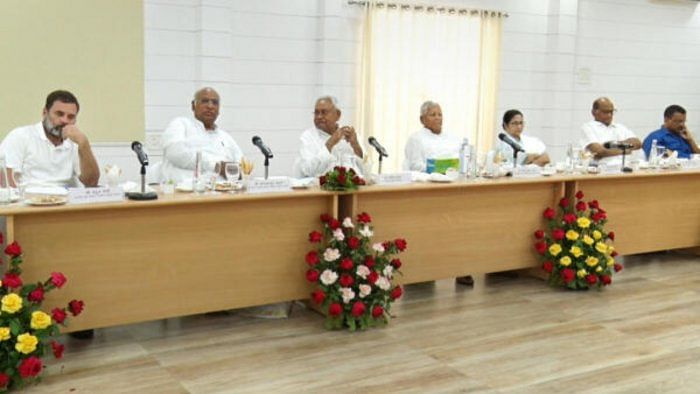
As the Opposition parties are scheduled to head to Shimla for the second round of meeting in mid-July to cement their ties in the fight against ruling BJP, the main challenge before them will be to come to an agreement on seat sharing in states.
Before the Shimla meeting, the immediate task for the leaders, however, would be to bring AAP back to the negotiation table after it threatened not to be part of an alliance where Congress is present or attend future deliberations if the latter does not announce its stand on ordinance issue.
At a meeting of 15 parties in Patna on Friday, top Opposition leaders agreed for a second meeting to formulate a “common agenda” and state-specific “plans” to “unitedly” fight the 2024 elections to defeat the BJP though AAP struck a discordant note on Congress not openly supporting it on ordinance.
While there is a broad agreement on focussing on a “common agenda” and a campaign plan, seat sharing formula in states like West Bengal, Delhi, Punjab and Haryana are likely to face trouble, especially if AAP returns to the negotiation table.
Kerala would be a peculiar case where the Congress led coalition would take on the Left but leaders argue that BJP has not emerged a force in the state and their strategy is restricted to such states.
States like Karnataka, Rajasthan, Gujarat, Madhya Pradesh, Chhattisgarh, Himachal Pradesh, Uttarakhand, Haryana and Assam, where Congress is in direct fight with the BJP, may not find much problem as the claims of other parties are not so strong.
At maximum, AAP may claim some seats in Gujarat and Haryana and BSP in Madhya Pradesh, Rajasthan and some other states if it finally joins the group.
In these states where there are 152 seats, the BJP bagged 140 seats leaving just seven to Congress and the rest to others. If the Opposition hopes to dethrone Modi dispensation, Congress would have to perform well in these states.
Similar to these states are Kerala, Tamil Nadu, Maharashtra, Bihar and Jharkhand where well-entrenched coalitions are in place. Congress leads the alliance only in Kerala while in other three states, it is a junior partner.
However, West Bengal will be a headache for the Opposition as Trinamool Congress believes it has the best chance for winning the most seats out of 42. Congress and Left are in an alliance against the Trinamool. Even if Congress is accommodated, the Left is unlikely to join such a coalition.
If AAP refuses to be part of the coalition in Delhi and Punjab, Congress would emerge as the main player in these states. Punjab would specifically be a problem as Congress is unlikely to leave much space for AAP. If a coalition works out between the two, AAP will also stake claim for some seats in Haryana.
Samajwadi Party would be the lead player in Uttar Pradesh, which has the highest number of 80 seats, and it would have to see how many seats it would be willing to part with RLD and Congress. BSP, which has so far been keeping a distance with the group, could also join.
In Odisha and Andhra Pradesh where BJD and YSR Congress respectively had kept a distance from the Opposition, Congress will be the main player.
Telangana is one place that would be keenly watched as BRS has refused to join the group ahead of Assembly elections due to Congress’ presence. Leaders from both sides would look at post election scenarios to decide on whether to alter their stands.
